Places to Watch Ninth Edition: Five Indicated Illegal Logging Area in Indonesia
This ninth edition features the top 5 Places to Watch for indications of illegal logging between 1 January and 31 March 2020. Places to Watch uses the method and data of GLAD Alert from Global Forest Watch, which is analyzed quarterly.
#1 Taringen Village, Manuhing District, Gunung Mas Regency, Central Kalimantan Province: 115.92 ha
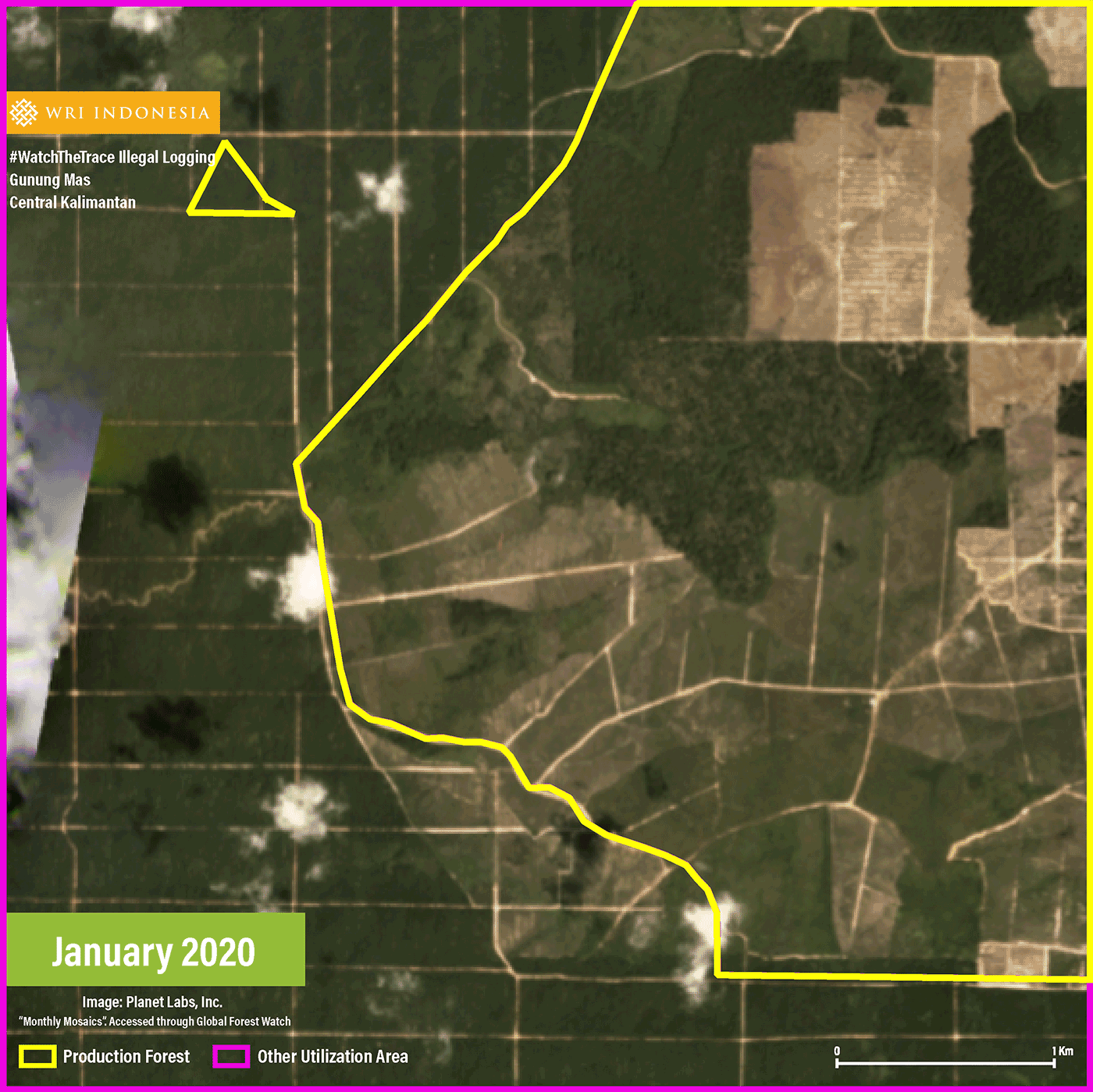
Indicated area #1 is located in a production forest with secondary dryland forest cover. The area is indicated to be located within a palm oil plantation concession. Possible reason for land clearing is expansion of palm oil plantation based on the orderly logging pattern that forms large blocks that are connected to a road access to the clearing area, although no planting activities had been spotted by the end of the observation period.
The Manuhing District has been reported as an area in Gunung Mas Regency prone to illegal logging. Reports from the EIA and JPIK have shown a number of illegal timbers sourced from misuse of palm oil plantation permit in Gunung Mas Regency, though nothing specifically points to indicated area #1.
#2 Naena Muktipura Village, Iwaka District, Mimika Regency, Papua Province: 78.93 ha
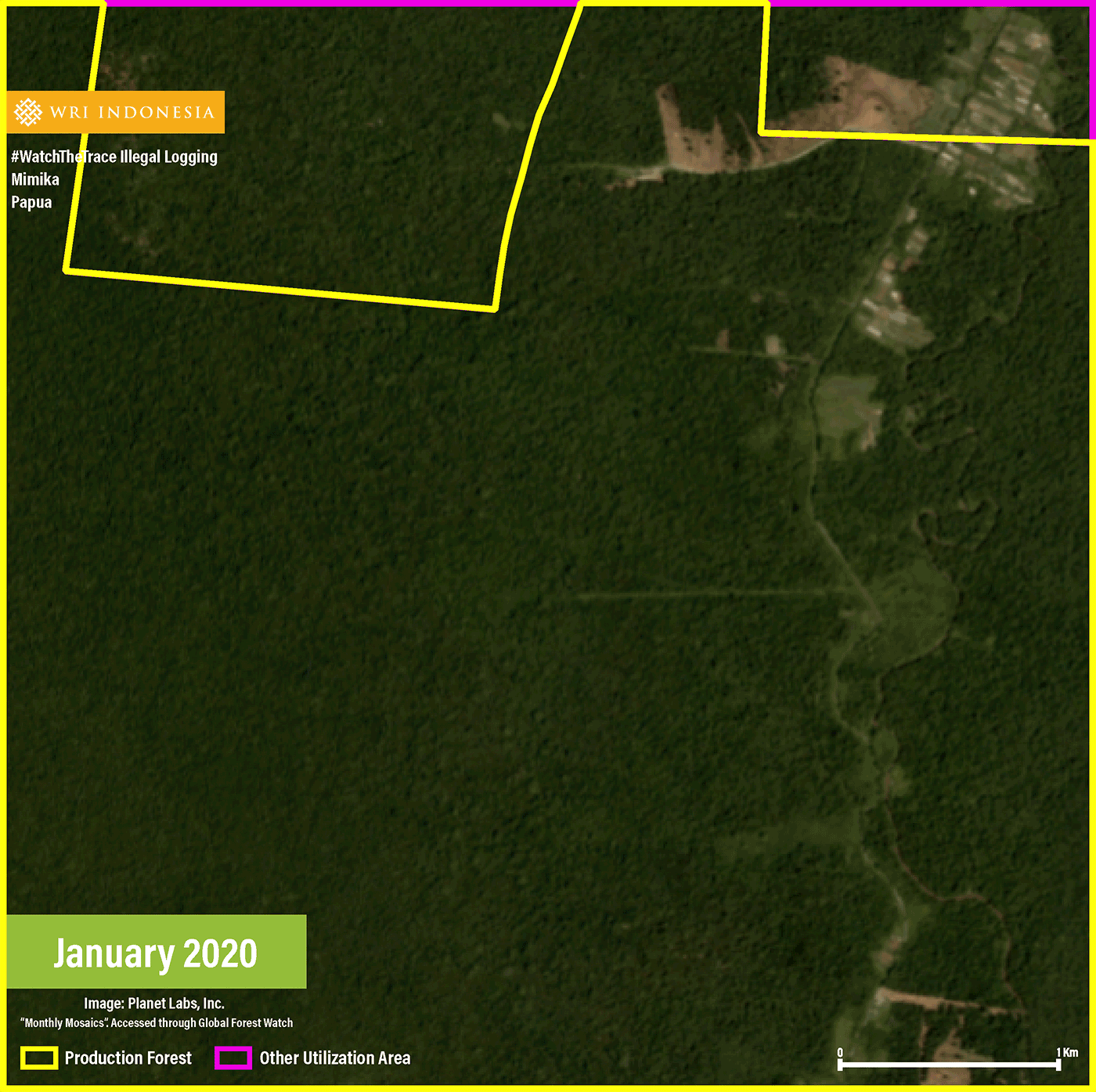
Indicated area #2 is located in a production forest with secondary dryland forest cover. The area directly borders with an area of other use (APL) to the north. Satellite image observation shows that the land clearing area borders with the main road, but the reason for forest clearing has not been identified because the cleared area hadn’t been utilized by the end of the observation period.
In July 2020, flash flood hit a few areas in Mimika, including Iwaka. Disruption of forest cover due to logging is believed to be the cause.
#3 Tababu Village, Tirawuta District, East Kolaka Regency, Southeast Sulawesi Province: 76.68 ha.
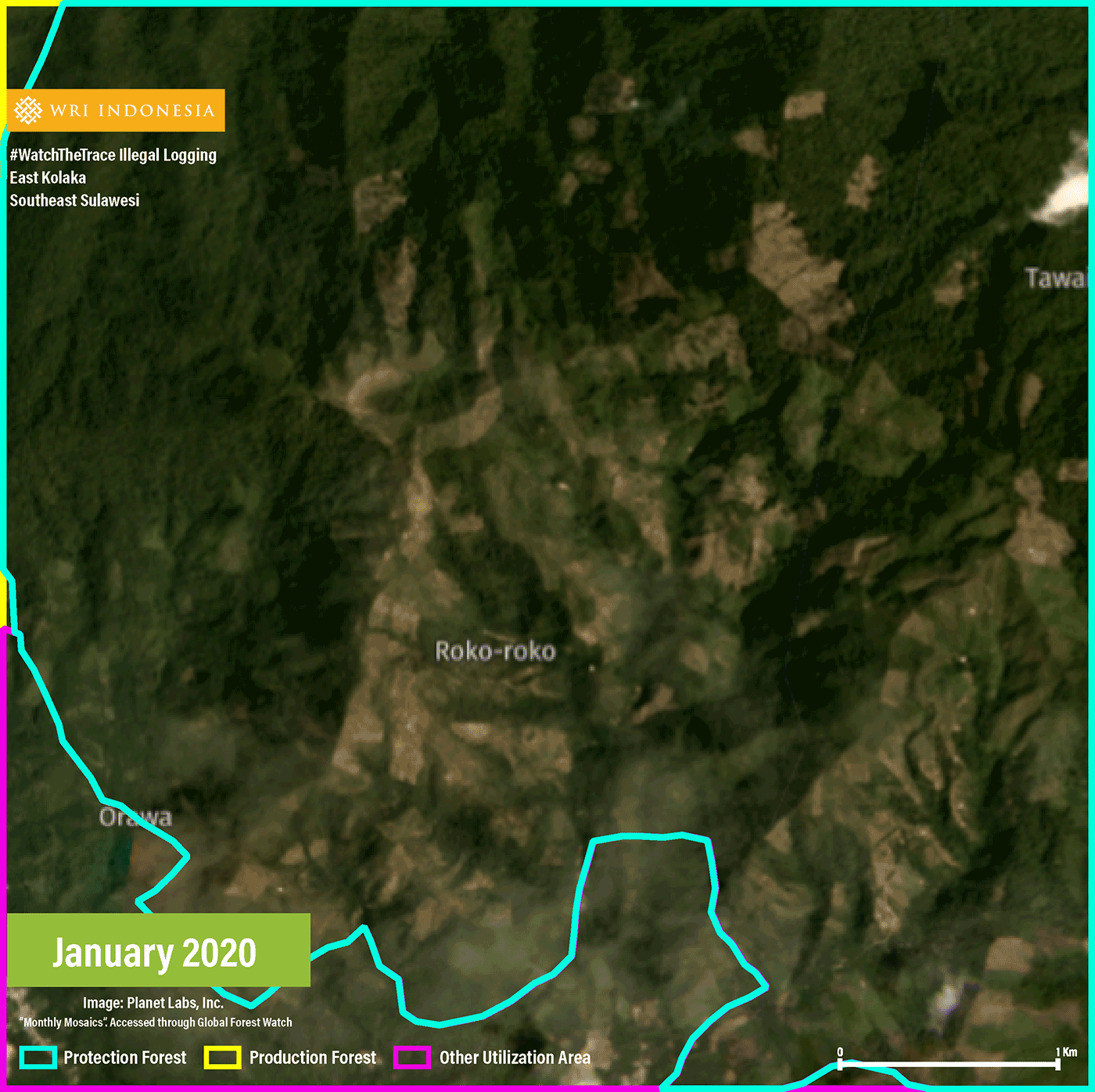
Another indicated illegal logging area is located in Laiwoi Protected Forest Management Unit (KPHL) XXII with primary dryland forest cover. The reason for land clearing is believed to be dryland farming based on satellite images showing sporadic small blocks of cleared areas around an existing dryland farm with a similar pattern.
According to a report, land clearing for plantation in East Kolaka is a frequent occurrence, often encroaching protected forest areas. In the Long-term Forest Management Plan (2016-2026) of KPHL XXII Laiwoi, illegal forest logging has been identified as a rampant issue in the jurisdiction of that KPHL unit.
#4 Tepian Village, Sembakung District, Nunukan Regency, North Kalimantan Province: 73.35 ha
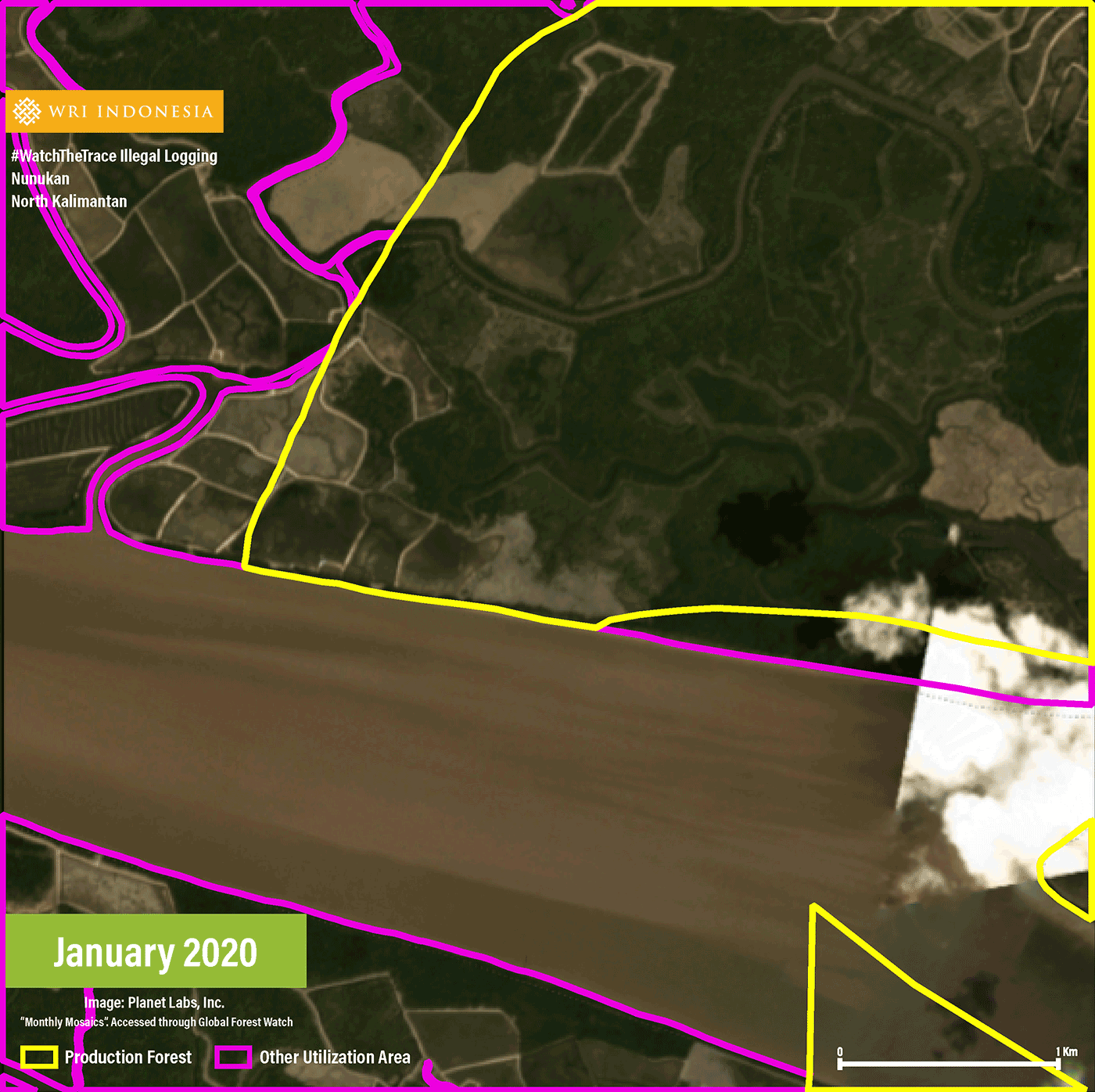
Indicated area #4 is located in Nunukan Production Forest Management Unit (KPHP) IV with secondary mangrove forest cover. The area borders with an area of other use (APL) to the east. Based on satellite image observation and how the adjacent APL is used, it seems that the forest clearing is done to make way for a new fishpond.
In 2018, 78,592 ha of fishpond encroached on production forests in North Kalimantan, while the remaining 659 ha encroached on conservation forest. Conversion of a sizeable mangrove forest in North Kalimantan, covering Sembakung District, for aquaculture has been reported.
#5 Timika Indah Village, Mimika Baru Disrict, Mimika Regency, Papua Province: 70.74 ha
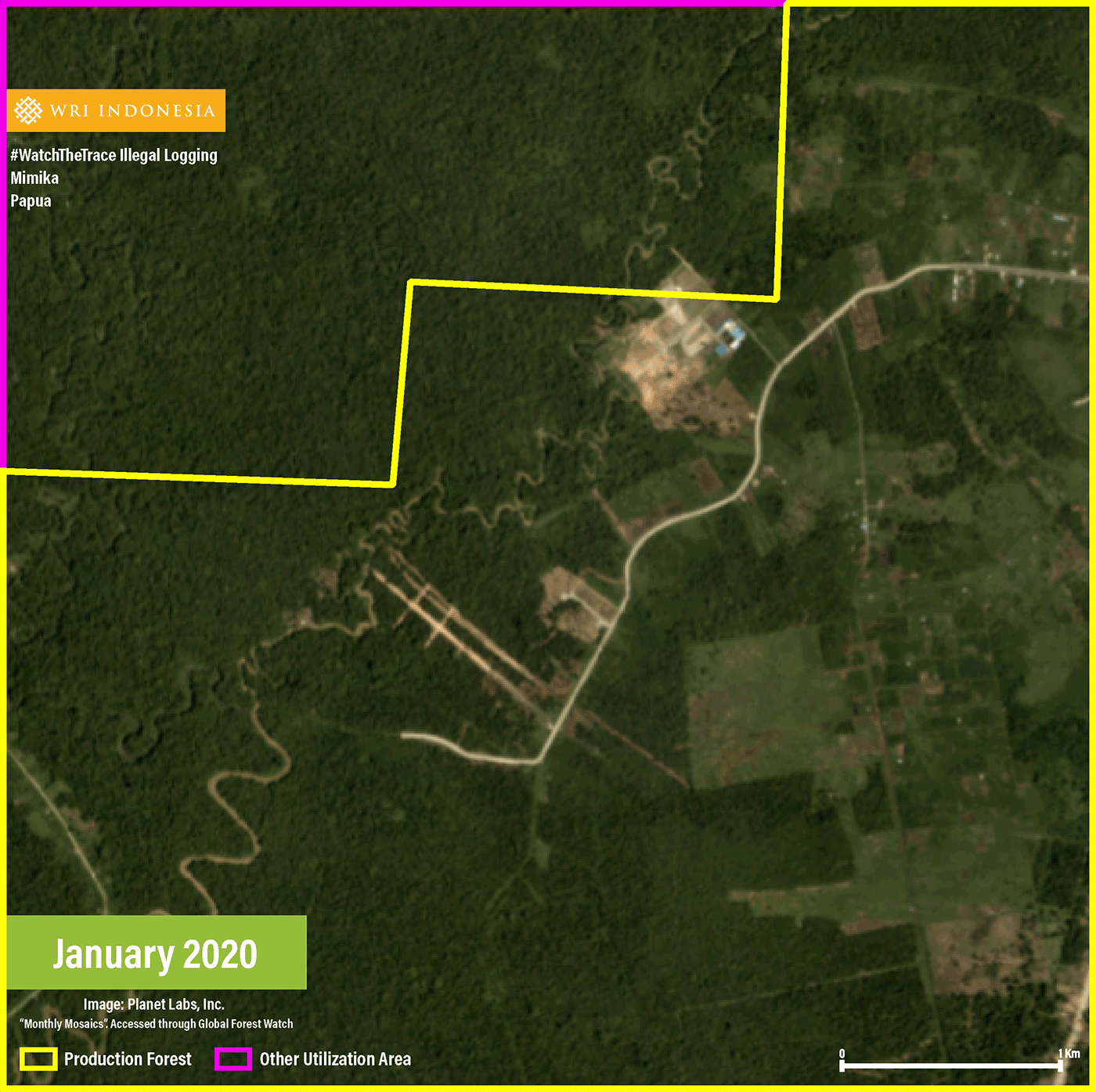
Indicated area #5 is located in a production forest with secondary dryland forest cover, 10 km northeast of indicated area #2. Area #5 is indicated to be located in a palm oil plantation. The cleared area on the side of the main road is relatively small, but the reason for the forest clearing has not been identified because the cleared area hadn’t been utilized by the end of the observation period.
News of illegal forest logging in Mimika Baru District in public media is rare. However, indicated area #5 is located not far from indicated area #2 in Iwaka District, which was hit by flood in last July-August.
The Next Step
The Five Places to Watch are identified based on indications analyzed using various instruments such as GLAD Alert, Forest Area Status Map and Land Cover/Utilization Map. However, this analysis can be used in determining the areas where monitoring for illegal logging must be prioritized. To that end, the following steps need to be taken immediately.
1. Field Verification and Action to Prevent Expansion of Illegal Logging in the Five Indicated Areas.
In this edition, indicated area #3 needs to be a focus as illegal logging is done in a protected forest and potentially spreads to the surrounding forest areas. Indicated areas #2 and #5 are both located in Mimika Regency and thus must be watched to prevent massive spread in the area. The July-August flood in Mimika Regency also make it an urgent matter to handle the illegal forest logging as part of disaster prevention.
As such, authorities in charge of forest protection at the five indicated areas such as the relevant Forest Management Units (KPH), Directorate Generals under the Ministry of Environment and Forestry, the local Province Forest Service and the local Police must collaboratively take action to prevent further illegal logging and illegal forest utilization. Community participation in providing information from the field may help in the verification process. If field verification is not conducted promptly, illegal logging will grow massively and the negative environmental impact will be inevitable. As the forest area that has been cleared and utilized for non-forestry activities grows larger, its management and restoration will become more challenging.
2. Upon Verification, the Handling Process Must Take Into Account Socio-economic Background of Local Communities.
Illegal logging across the five Indicated Areas is closely associated with small-scale economic activities. As such, upon verification, the handling process must take into account the socio-economic background of the local communities. The handling mechanism may include logical and fair conflict resolution, social forestry, agrarian reformation and fair and logical law enforcement schemes. In addition, it is also necessary to trace the perpetrators back to the masterminds (intellectual players) who are reaping the ultimate benefits of illegal logging.